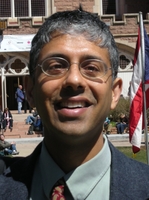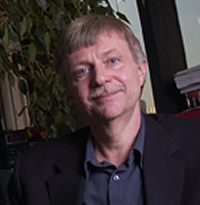
Discrete-time Signals and Systems - An Operator Approach
This book aims to introduce you to a powerful tool for analyzing and designing systems – whether electronic, mechanical, or thermal.
Tag(s): Signal Processing
Publication date: 31 Dec 2009
ISBN-10: n/a
ISBN-13: n/a
Paperback: n/a
Views: 23,423
Type: N/A
Publisher: n/a
License: n/a
Post time: 25 Apr 2011 10:12:18
Discrete-time Signals and Systems - An Operator Approach
 This book aims to introduce you to a powerful tool for analyzing and designing systems – whether electronic, mechanical, or thermal.
This book aims to introduce you to a powerful tool for analyzing and designing systems – whether electronic, mechanical, or thermal.
Publication date: 31 Dec 2009
ISBN-10: n/a
ISBN-13: n/a
Paperback: n/a
Views: 23,423
Document Type: N/A
Publisher: n/a
License: n/a
Post time: 25 Apr 2011 10:12:18
This book aims to introduce you to a powerful tool for analyzing and designing systems – whether electronic, mechanical, or thermal. This book grew out of the "Signals and Systems" course (numbered 6.003) that we have taught on and off to MIT's Electrical Engineering and Computer Science students.
The traditional signals-and-systems course – for example [17] – emphasizes the analysis of continuous-time systems, in particular analog circuits. However, most engineers will not specialize in analog circuits. Rather, digital technology offers such vast computing power that analogy circuits are often designed through digital simulation.
Digital simulation is an inherently discrete-time operation. Furthermore, almost all fundamental ideas of signals and systems can be taught using discrete-time systems. Modularity and multiple representations , for example, aid the design of discrete-time (or continuous-time) systems. Similarly, the ideas for modes, poles, control, and feedback.
Furthermore, by teaching the material in a context not limited to circuits, we emphasize the generality of these tools. Feedback and simulation abound in the natural and engineered world, and we would like our students to be flexible and creative in understanding and designing these systems. Therefore, we begin our "Signals and Systems" course with discrete-time systems, and give our students this book. A fundamental difference from most discussions of discrete-time systems is the approach using operators. Operators make it possible to avoid the confusing notion of "transform". Instead, the operator expression for a discrete-time system, and the system's impulse response are two representations for the same system; they are the coordinates of a point as seen from two different coordinate systems. Then a transformation of a system has an active meaning: for example, composing two systems to build a new system.
Tweet
About The Author(s)
No information is available for this author.
Sanjoy Mahajan is Associate Professor of Applied Science and Engineering at Olin College of Engineering and Visiting Associate Professor of Electrical Engineering and Computer Science at MIT.

Sanjoy Mahajan is Associate Professor of Applied Science and Engineering at Olin College of Engineering and Visiting Associate Professor of Electrical Engineering and Computer Science at MIT.
